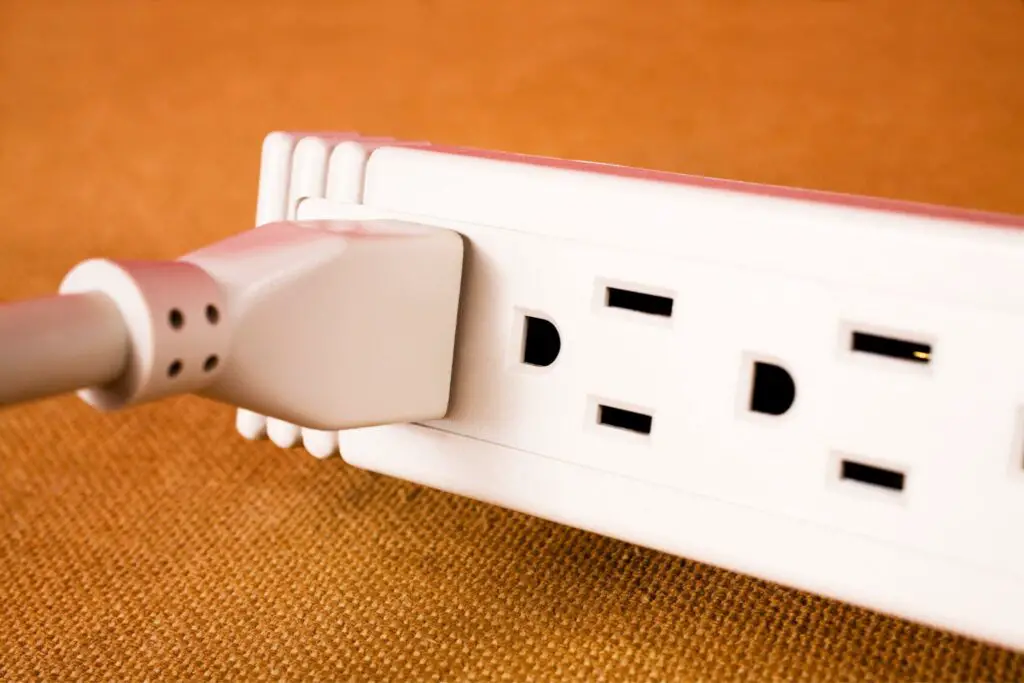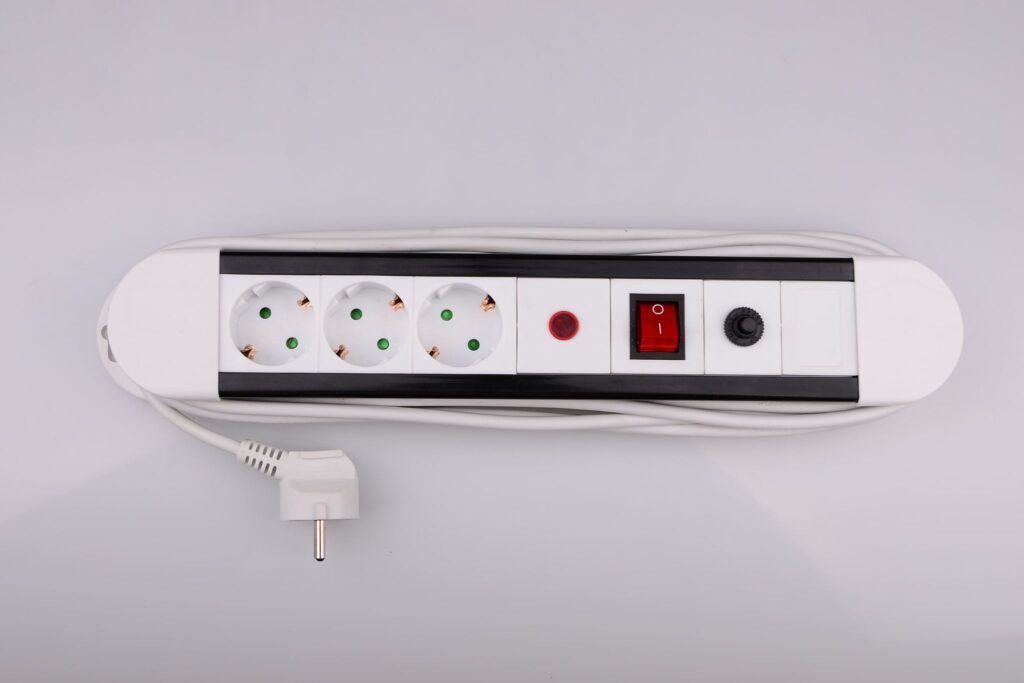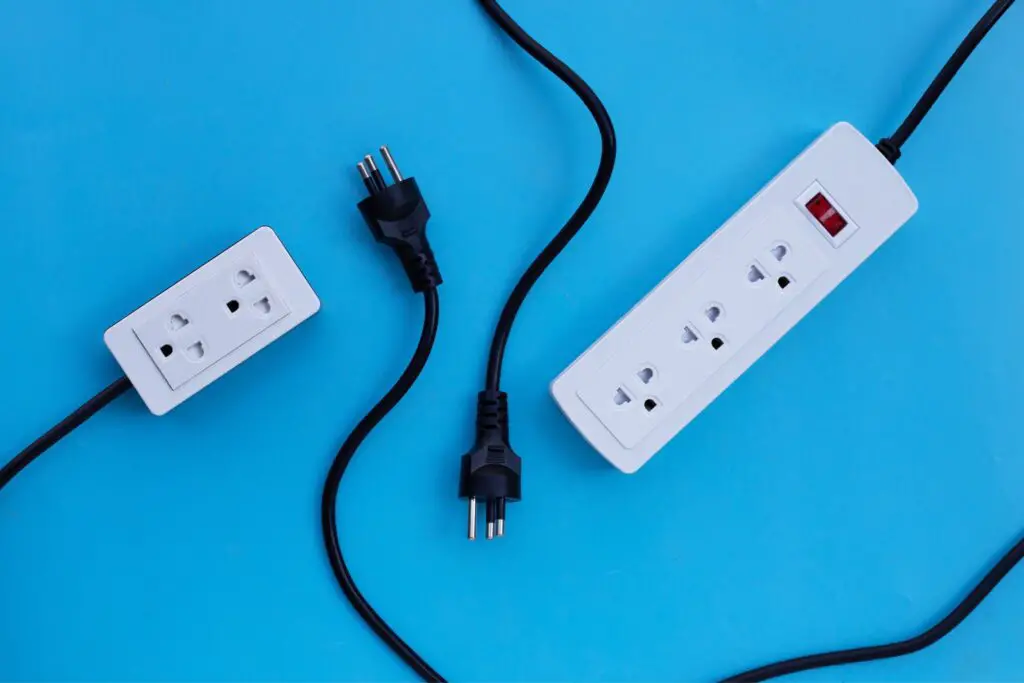Originally Created on: May 8, 2023 @ 8:40 am
Can you plug a microwave into a power strip? This is a common question that many people have when it comes to using their microwave in their kitchen.
This article will explore the different aspects of operating a power strip with your microwave and provide the necessary answers.
When setting up your kitchen, you must ensure that all your electrical appliances are connected safely and efficiently.
This includes your microwave, which is an essential appliance in most households. Let us dive into the details of using power strips with a microwave.
Also Read: Can I Put A Napkin In The Microwave? [The SHOCKING Answer + 5 Tips]
Table of Content
Microwave and Power Strip Compatibility
Can you plug a microwave into a power strip? Yes, it is possible to plug a microwave into a power strip, but certain precautions must be taken to ensure safety and avoid potential hazards.
Here are some essential things to consider when plugging a microwave into a power strip:
- Check the power strip’s rating: Make sure that the power strip you use is rated for the wattage of your microwave. Microwave ovens typically require much power, ranging from 600 watts for smaller models to over 1200 watts for larger ones. Using a power strip that is not rated for the microwave’s power requirements can cause the power strip to overheat, melt or even start a fire.
- Grounding: Ensure the power strip is properly grounded to prevent electrical shocks. A grounded power strip will have a third prong on its plug, connecting to the electrical circuit’s ground wire. This helps to dissipate any electrical charges that may build up in the power strip and prevent electrical hazards.
- Avoid using extension cords: It is recommended to plug the power strip directly into a wall outlet rather than using an extension cord. Extension cords can easily get damaged, and if they are not rated for the same wattage as your microwave, they may overheat or cause a short circuit.
- Surge protection: Consider using a power strip with surge protection to protect your microwave from power surges, which can damage the appliance or cause it to malfunction.
Finally, it is possible to plug a microwave into a power strip, but ensuring that the power strip is rated for the microwave’s wattage, is grounded, and has surge protection is essential.
Avoiding extension cords and keeping other high-wattage appliances off the same power strip is crucial to prevent circuit overload.
By following these guidelines, you can safely use a power strip for your microwave and enjoy its convenience without any risk.
Microwave Circuit Requirement
It is generally recommended to have a microwave on its circuit, mainly if it is a higher-wattage model.
This is because microwaves draw much power, and sharing a rotation with other high-wattage appliances can lead to circuit overloading, tripping breakers, or even causing electrical fires.
A dedicated circuit for your microwave also ensures it gets the power it needs to operate efficiently without any voltage drops or fluctuations affecting its performance. This is especially important if you use your microwave frequently or for long periods.
Low-wattage microwaves (under 700 watts) can typically be plugged into a regular outlet without issues.
These microwaves require less power and can share a circuit with smaller appliances, such as coffee makers or blenders, without causing problems.
However, checking the outlet and ensuring it is properly grounded and rated for the microwave’s wattage is still essential.
Microwave Extension Cord Suitability

Plugging a microwave into an extension cord is not recommended due to the potential safety risks.
Most extension cords are not designed to handle the amount of power that a microwave draws, especially high-wattage models. This can cause the line to overheat and potentially start a fire.
Moreover, extension cords are often prone to damage, such as fraying or getting twisted, which can lead to short circuits and other electrical hazards.
If you need to use an extension cord for your microwave, ensure it is a heavy-duty cord rated for your appliance’s wattage and in good condition (Filippiadis, 2018). It should also be plugged directly into a wall outlet rather than a power strip.
In summary, it is possible to plug a microwave into an extension cord, but it is not recommended due to the safety hazards involved.
It is better to plug your microwave directly into a wall outlet or use a power strip that is rated for the wattage of your appliance and has surge protection.
If you must use an extension cord, ensure it is a heavy-duty cord in good condition and rated for your microwave’s wattage.
Microwave Heavy-Duty Cord Usage

While heavy-duty extension cords have a higher capacity for power and are designed for more heavy-duty appliances, using them with a microwave still needs to be recommended.
Even with heavy-duty cords, ensure that the cord is rated for the microwave’s wattage and is in good condition.
Using an extension cord not rated for the microwave’s wattage can pose a fire hazard, damage the microwave, or even result in an electrical shock.
It is important to note that extension cords are not intended to be a permanent solution for appliances like microwaves.
Extension cords are more prone to damage than fixed wiring, and using them for extended periods can lead to overheating, melting, or even short circuits (Rodenbeck et al., 2021).
If you must use an extension cord for your microwave, it should be a temporary solution until a more permanent electrical solution can be implemented.
In summary, while heavy-duty extension cords are designed for more power-intensive applications, using them with a microwave still needs to be recommended.
It is best to plug your microwave directly into a wall outlet or a power strip with surge protection. If you must use an extension cord, ensure it is rated for the microwave’s wattage and is in good condition.
Only use it temporarily until a more permanent electrical solution can be implemented.
Microwave on Heavy-Duty Strip

When plugging a microwave into a heavy-duty power strip, it is essential to ensure that the power strip can handle the microwave’s wattage.
This is especially important for higher-wattage microwaves, as they can draw a significant amount of power and overload a power strip that is not rated for their wattage.
It is recommended to use a power strip rated for at least 1500 watts and surge protection for added safety.
It is also essential to avoid plugging other high-wattage appliances into the same power strip as the microwave, which can lead to overloading and safety hazards (Rodenbeck et al., 2021).
Instead, use a separate power strip or outlet for other high-wattage appliances to avoid overloading the circuit.
A heavy-duty power strip can provide added convenience and flexibility for plugging in your microwave.
Still, ensuring that the power strip is rated for the microwave’s wattage and is equipped with surge protection is essential.
It’s also necessary to avoid plugging other high-wattage appliances into the same power strip to prevent overloading and potential safety hazards.
CONCLUSION
In conclusion, connect your microwave directly to a wall socket or a power strip with surge protection certified for its wattage.
Avoid using extension cables, particularly heavy-duty ones, since they may not be built for a microwave’s high power requirements and may cause a fire.
Ground your power strip or outlet, and do not overload the circuit with high-wattage gadgets.
You can keep your kitchen safe by adopting simple steps. Microwaves may be harmful if misused.

![Can You Plug A Microwave Into a Power Strip [+ 5 MAJOR Concerns]](https://mykitchenapex.com/wp-content/uploads/2023/05/Can-You-Plug-A-Microwave-Into-a-Power-Strip-5-MAJOR-Concerns-1.jpg)